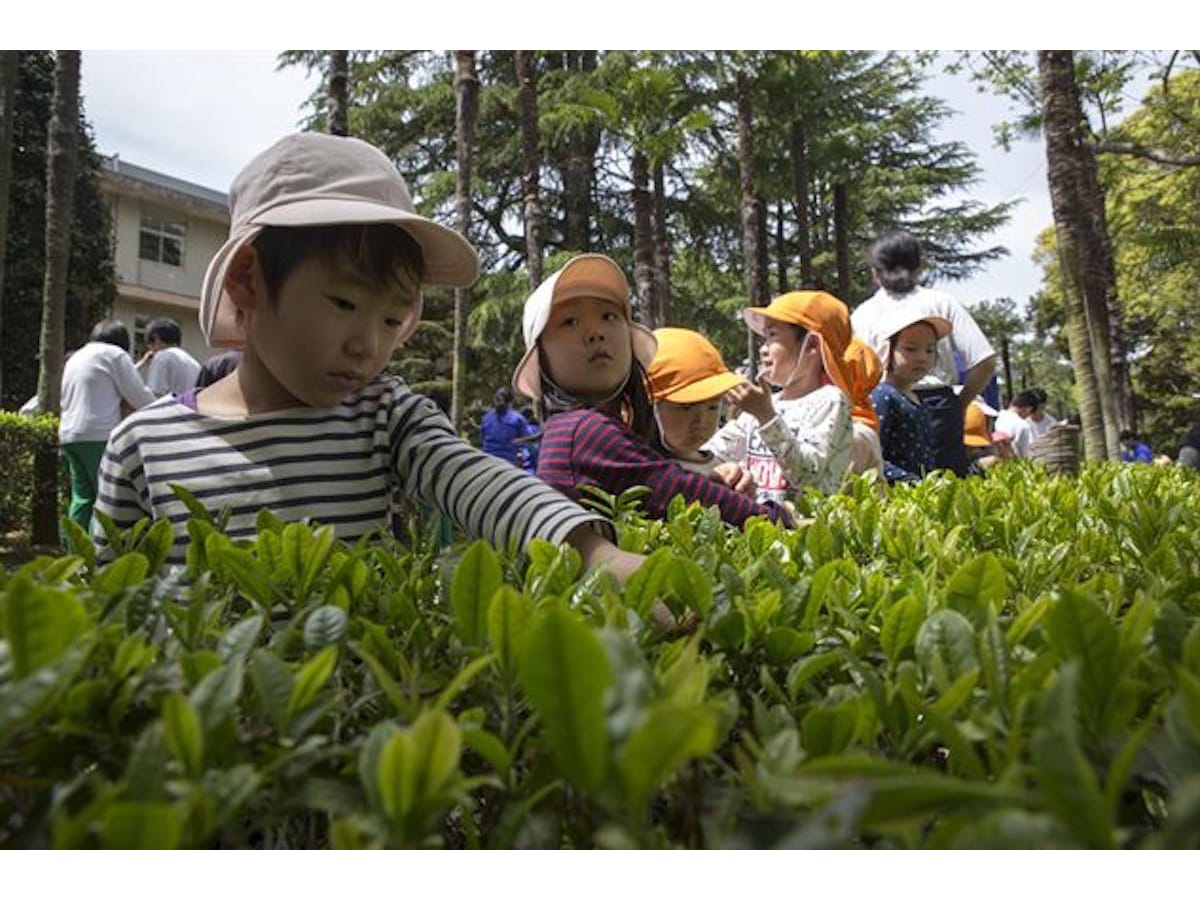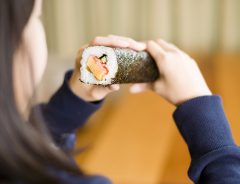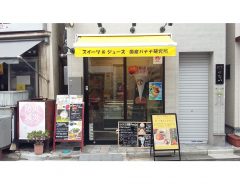
Source: Marine Corps Air Station Iwakuni, Japan / Japanese children on a school trip to a farm
Why are fruit and vegetables in Japan so expensive?
- Tags:
- Expensive / Japanese fruits / Japanese vegetables
Related Article
-

An Auction 1st: ¥40,000 Yen for a Single Cherry!
-

Welcome fall with these gorgeous grape cakes from Café Comme Ça
-

Japan’s Rare “White Jewel” Strawberries Are Berry Expensive
-

$2,600 Premium Wagyu Beef Bento Is Japan’s Most Luxurious Lunch Box
-

Ehomaki: Unraveling The Giant Sushi Roll Phenomenon
-

The National Banana Research Institute in Yanaka, Tokyo


The price of fresh fruit and vegetables in Japan is a real shocker. In the case of fruit, it's commonplace to hear people say that this is because so much care goes into the cultivation of each individual fruit. Heart-warming stories of cherry farmers hand-polishing their bright red orbs, and consumers appreciatively tucking into their creamy white flesh are regularly trotted out to justify the exorbitant price of domestically produced fruit.
Photo by George Lloyd
But what of humble, day to day produce like potatoes, carrots, and tomatoes? At my local supermarket a small bag of potatoes, grown in Nagasaki, sets me back 297 yen, excluding tax. Two carrots, grown in Chiba, cost 197 yen, and tomatoes, also from Chiba, are 117 yen each.
I don’t know about the price of veg in neighbouring countries like China or South Korea, but in the UK, another small, island nation with not many farmers and an overwhelmingly urban population, prices are less than half those in Japan.
Scanning supermarket giant Tesco’s website, I see that a small bag of potatoes, grown in Kent, can be mine for the equivalent of 140 yen, a whole kilo of Devon carrots costs just 70 yen and five tomatoes, grown on the vine in the Netherlands, are 130 yen (and all of these prices include tax).
Photo by George Lloyd
In 2016, the value of Japan’s domestically produced vegetables was estimated at US$22.9 billion. Compare that to the value of domestically produced vegetables in the UK - US$1.89 in 2017 – and you can see that, even allowing for the fact that Japan’s population is about twice that of the UK, Japanese farmers are on to a winner.
Why the discrepancy in prices? To some extent, the blame lies with fussy shoppers. When Japanese farmers are preparing their crops for sale, they know that only the most beautiful items will pass muster with the supermarkets. A misshapen spud or slightly discoloured tomato will either be eaten by the farmer’s family or thrown away. Aside from being wasteful, this makes vegetables more valuable than they should be, and thereby more expensive.
Photo by George Lloyd
Another factor to bear in mind is that Japan doesn’t have much farmland. Only 12% of the land is used for growing crops, and most of that is used for rice production. The most important factor, however, is that Japanese farms are much smaller than those in other OECD countries. According to government statistics, the average size of a Japanese farm is just 1.9 hectares (4.7 acres), compared with 198 hectares (490 acres) in the United States. Small farms are less efficient than big farms, and small farmers have less ready cash to invest in the machinery needed to bring costs down.
Ironically, the predominance of small farms is down to the Americans. After World War II, the US government occupied Japan for seven years. During that time it took several radical steps to dismantle what they saw as the structural impediments to the creation of a democratic society. One of them was a land reform programme that saw the big, old feudal estates broken up and distributed to millions of small-time farmers. To this day, Japanese law stipulates that all farmland must be worked directly by whoever owns it. This might make Japan a more equitable society, but it also makes its agriculture much less efficient and its farm goods more expensive.
Nonetheless, both the farmers and the ruling LDP like things that way. Although farming makes up little more than one percent of Japan’s GDP, and farmers make up just 3.4% of the population, outdated election maps and effective organization by farmers give Japan's rural communities disproportionate political power. Small farmers have been stalwart supporters of the LDP since the ruling party was created in 1955 and the farmers’ lobby is one of the most powerful in Japan.
More surprisingly, shoppers like the status quo too. According to a Yomiuri Shimbun survey conducted in 2011, 80% of voters think that the government should subsidise people engaging in farming for the first time. Shoppers support subsidised agriculture because they are encouraged to believe that Japan’s farm goods are the best in the world and that such quality comes at a price.
Preference for locally produced vegetables over imported vegetables is strong among Japanese consumers. The same Yomiuri survey found that while 46% of shoppers believe that foreign farm produce is less expensive than Japanese produce, a whopping 76% also believe that it is unsafe.
This disdain for foreign farm products ensures that a nation of savvy urban consumers is regularly shafted in the supermarket. Or, seen another way, that the rural way of life at the heart of traditional Japanese culture is propped up by urbanites happy to pay over the odds for their potatoes, carrots and tomatoes.
Be that as it may, Japanese farming is an unsustainable proposition. As with so many things in Japan, demography is to blame. The average age of a Japanese farmer is 65 and rising. With no one willing to take over their farms when they die, Japanese farming will soon reach a tipping point. In 1961, the country produced 78% of all the food it consumed. By 2006, that figure had dropped to 39%. It will drop a lot further in the future, and as it does, Japan’s shoppers will start to pay a lot less for their groceries - whether they like it or not.